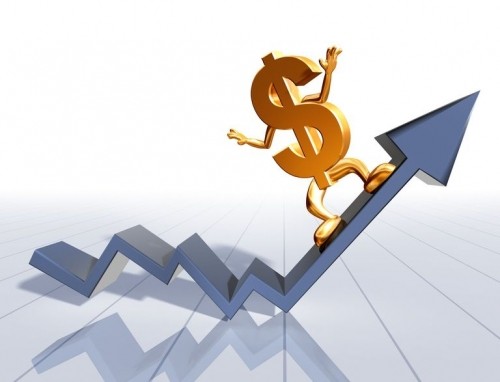
Banks race to attract low-cost capital sources
Latest
 |
| The race to lure deposits among banks is becoming fiercer as more customers are selected medium- and long-term savings to get higher interest rates. |
Deposits at banks are mainly from customers’ payment accounts. Previously, due to low interest rates on medium- and long-term deposits, a number of customers did not pay much attention to transferring idle money in their payment accounts to term deposit accounts. Banks therefore benefited significantly from the low-cost capital source.
However, the trend has changed after interest rates for medium- and long-term deposits have sharply surged to hit nearly 10% per year.
VPBank last week continually increased interest rates for deposits under 10 billion VND (402,536 USD) with terms of 12, 24 and 36 months by 0.2-0.4 percentage point per year. The highest savings rate at VPBank is currently 9% per year, applied to online 18-month deposits.
VietinBank also raised the highest deposit interest rate to 8.2% per year for online deposits from 12 months to under 36 months. With a rate hike of 0.8 percentage point per year for online deposits against those at the counter, VietinBank is becoming the bank to offer the highest interest rate among State-owned banks.
Notably, though SCB had listed the highest interest rate in the banking system, it last week continued to sharply increase interest rates to approach the 10% threshold per year for terms of more than six months. The highest deposit interest rate at this bank currently increased to 9.75% from 9.3% per year for 13, 15, 18, 24 and 36 month deposits. Interest rates for terms from 7 to 12 months range from 9.4-9.65% per year and 9.35% per year for six-month term.
According to industry insiders, demand deposits, or current account savings account (CASA), of many banks has started to decline since the second quarter of 2022. They said the sharp interest rate hike for medium- and long-term savings has caused a large amount of demand deposits in current accounts to shift to savings accounts to enjoy higher interest rates.
Q3 2022 financial statements of banks showed the average CASA ratio of 27 listed banks by the end of the third quarter of 2022 decreased by 1.6% to 16% against the beginning of the year. Eighteen out of 27 listed banks recorded a decrease in demand deposits.
Though Techcombank and MBBank topped the list with demand deposits at 135.43 trillion VND and 171.39 trillion VND, the two banks’ CASA ratios declined by 8.4% and 13.8% to 42.4% and 39.1%, respectively.
Notably, some banks recorded a sharp drop in CASA ratios, such as KienlongBank (-51.5%), VietABank (-51.2%); LienVietPostBank (-32.5%) and SaigonBank (-22.6%).
For banks, attracting a high proportion of demand deposits is very important, because it creates a cheap source of capital. Normally, the interest rates of demand deposits are much lower than term deposits, being only 0.1-0.3% per year.
According to experts, the high CASA ratio will create a premise for banks to improve their net interest margin (NIM) while keeping the lending rates at competitive levels in the market.
High CASA ratio is considered a remarkable achievement for banks. For example, MSB recorded NIM of 4.34% in the first nine months of the year, the bank’s most effective rate in recent years. The bank’s NIM growth has partly come from effective CASA attraction strategies in recent times such as promoting digitalisation, launching various utility products and services.
ACB also flexibly deployed many solutions to mobilise CASA, helping the bank’s NIM grow. ACB’s CASA is forecast to reach about 27% by the end of 2022, which is a relatively high rate in the banking system.
Banking expert Nguyen Tri Hieu said competition among banks to lure demand deposits, or increase the CASA ratio, is becoming fiercer amid sharp interest rate hike of medium- and long-term deposits. Despite banks’ efforts to increase CASA, it will be hard for them to keep CASA ratios as high as previously, even offering the highest rate for demand deposits.
Before September 2022, most banks listed the demand deposit interest rate at only 0.02-0.2% per year. However, many banks have recently increased sharply interest rates for demand deposits, even hitting the cap of 1% regulated by the State Bank of Vietnam (SBV), to lure customers.
Under Decision No. 1812/QĐ-NHNN dated October 24, 2022 on the maximum interest rate for deposits in Vietnamese dong of organisations and individuals at credit institutions and foreign bank branches, the SBV allowed banks to increase the maximum interest rate for demand deposits with terms of less than one month from 0.5% to 1.0% per year.
Techcombank, for example, earlier this month increased the interest rate on demand deposits to 1% per year. Previously, despite other banks raising demand deposit rates since the end of September, Techcombank still maintained the rate at 0.03%, among the lowest in the banking system.
VPB, Techcombank, ACB, Bac A Bank, OCB, Sacombank, SCB, NCB and Kienlongbank currently also list the demand deposit interest rate at 1% per year.
Besides the rate hike, banks have also introduced many policies to attract demand depositors, such as exemption of transaction, money transfer and withdrawal fees.
Notably, according to Hieu, as CASA is characterised by instability as customers can withdraw their demand deposits at any time, banks, especially small-sized ones, must focus on improving their services to lure demand depositors so as to increase their CASA rate.
“If a bank does not focus on developing digital services to enable it to connect with more ecosystems to serve the diverse needs of customers, they will either automatically choose another bank with better services, or withdraw their money to invest in other channels. At that time, the bank’s CASA will decline,” Hieu said.
























